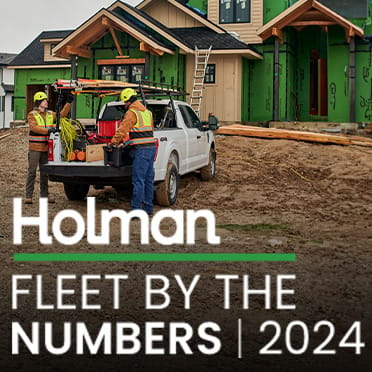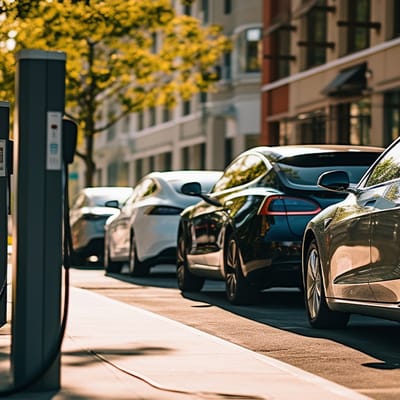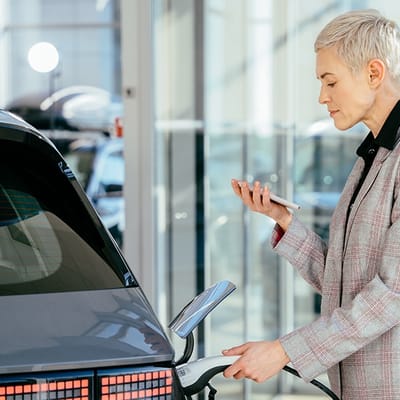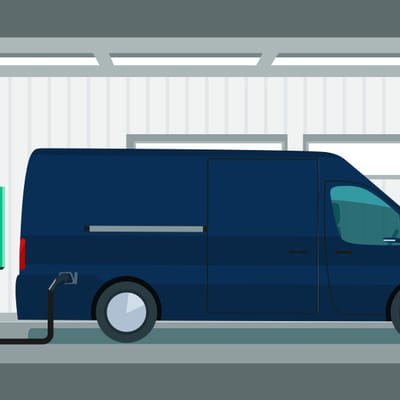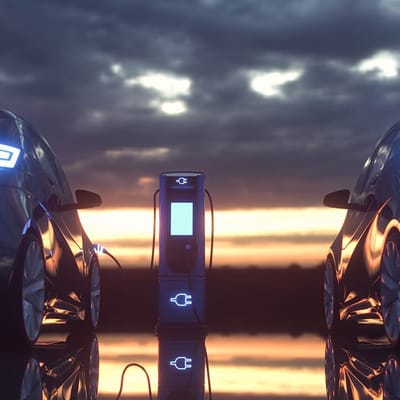- SolutionsWith a strategic solution that works for you and your business, you can unlock revenue-generating opportunities and begin managing your fleet as an investment.Overview
- About UsWhen Holman was founded in 1924, we set something positive in motion. Our consistent focus on people and our commitment to integrity make us who we are today.Overview
 Join Our TeamWe’re not just in the automotive business, we’re in the people business. Join us for the ride.Browse Careers
Join Our TeamWe’re not just in the automotive business, we’re in the people business. Join us for the ride.Browse Careers
Public EV Charging Guide – Know the Downsides
Holman Marketing
October 7, 2022
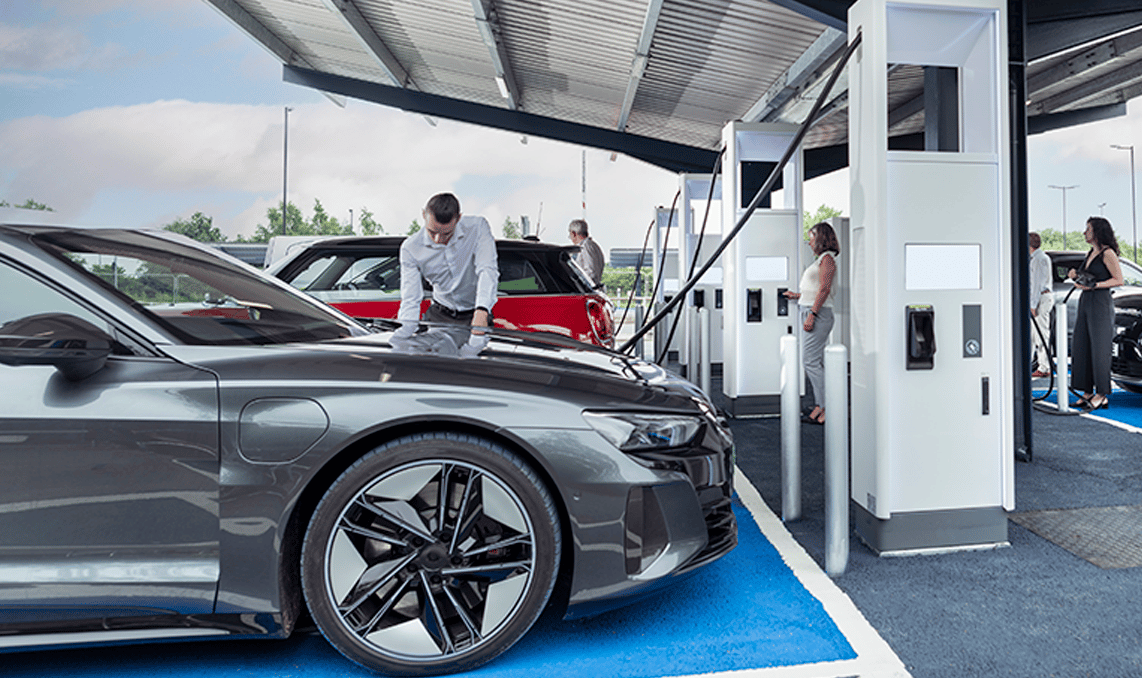
Welcome to our third and final overview of electric vehicle charging solutions: public charging. Please don’t mistake this as one of those “saved the best for last” situations. We’ve left this blog about public charging last on purpose – because it should be your fleet’s last choice for EV charging, behind at-home and depot charging.
Here’s our best and only advice to fleets today: do not rely on public EV charging as a single charging solution. As always, this points back to the vehicle selector decision, when you should be choosing EV models with sufficient range to cover your average-to-maximum daily mileage needs. (Looking for accurate mileage assessments? Your telematics data can help.)
If neither at-home nor depot charging options work for your fleet, you should delay EV implementation and seek other opportunities to increase fleet sustainability.
In other words, the only ideal scenario for public charging is to give a fleet vehicle just enough energy to reach an at-home or depot charging station. The reasons? TIME and MONEY! Here’s why:
TOO HARD TO FIND
- According to the U.S. Department of Energy’s Alternative Fuels Data Center, the number of EV charging stations is approaching 49,000 – but that’s still only one-third the number of U.S. gas stations available.
- Even in areas with high EV adoption rates, finding a charger that is fully functioning is a formidable challenge. Low reliability rates can be attributed to broken equipment, connection failures, and payment issues.
TOO LONG TO CHARGE
- If your drivers need to use public charging, ideally they’ll find a Level 3 charging station (also called DC Fast Charging or DCFC). One of these can charge a battery to 80 percent in 30 minutes, and then the charging speed slows significantly for the remaining 20 percent (to prevent overheating the battery).
- Unfortunately, only 20 percent of the individual EV charging ports in the U.S. are Level 3. All the rest of the public chargers are Level 2, which need 8-11 hours to recharge the battery fully.
- Any time a fleet vehicle spends waiting for an open charger is cutting into your productivity and/or revenue.
TOO EXPENSIVE
- Public charging rates are comprised of the cost per kilowatt-hour (kWh), plus time of use (TOU) rates, which are higher during the day, plus demand charges, which typically apply to Level 3 DC fast chargers.
- Level 3 public charging is the most expensive option. It can cost three times as much as at-home or depot charging.
Public EV Charging Companies
| Level 3 – DC Fast Charging Stations | Level 3 – DC Fast Charging Ports | |
| Tesla | 1,300 | 13,000 |
| Electrify America | 750 | 3,300 |
| Shell Recharge Solutions | – | 3,300 |
| ChargePoint | 1,700 | 1,700 |
| EVgo | 840 | 1,700 |
| Francis Energy | – | 545 |
Source: U.S. News & World Report
More about the charging companies:
- Tesla – their network of 13,000 Level 3 charging ports is more than double all the other charging companies combined; however, they can only be used by Tesla vehicles (for now)
- Electrify America – owned by Volkswagen, partnered with Ford; provides more than 3,300 charge ports nationwide; an optional membership provides a discount
- Shell Recharge Solutions – formerly Greenlots; has around 3,000 charge ports; is converting some Shell gas stations to fast-charging stations
- ChargePoint – has the largest U.S. network with more than 45,000 Level 2 charge points, many are free to use; they also offer 1,700 Level 3 charge points
- EVgo – an optional subscription provides a discount for their 1,700 Level 3 charge points; partnered with GM
- Francis Energy – offers 545 Level 3 charge points across the U.S. heartland; is branching out from Oklahoma and moving into 24 additional states
Government Support
In addition to charging companies and automakers that continue to expand their public charging networks at an increasing pace, the U.S. government is going to chip in and help.
Under the National Electric Vehicle Infrastructure Formula Program, the U.S. Departments of Transportation and Energy plan to spend $5 billion helping states build a national EV charging network along the national highway system. Level 2 stations cost only a few thousand dollars each (compared to Level 3 stations, which cost tens of thousands of dollars each). Therefore, Level 2 will likely make up the majority of the federally-funded network and provide minimal support to fleets.
Conclusion
This brings us to the end of our blog series on EV charging solutions. If you’d like to see any of the previous blogs, you can click here:
- Three EV Charging Solutions for Your Fleet
- Four Steps to At-Home EV Charger Installation
- Depot Solutions for Centrally-parked EV Fleet Charging
You can also subscribe to The Morning Brake newsletter from Holman with news and trends from all corners of the auto industry, including sustainability.
Next Post
2022 Ford Mustang Mach-ERelated Resources
Explore more related industry news, insights, and developments.


